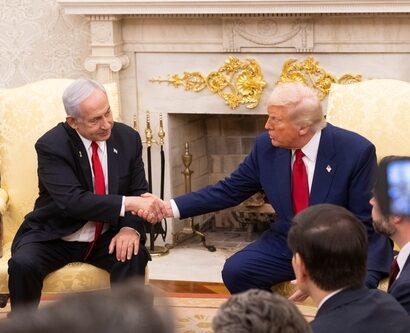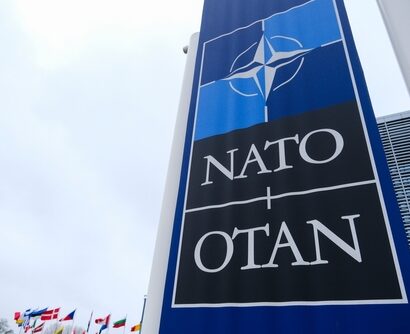Abstract: The Financial Action Task Force (FATF), as the policy setter on anti-money laundering and countering the financing of terrorism, recommends criminalising money laundering as an offence. Following those recommendations, countries have criminalised the offence of money laundering by enacting national laws. Although national policies are in place, their effectiveness must still be evaluated. To ascertain just that, this research peruses twelve indictments filed by the Attorney General’s Department with the charge of money laundering as a sample. Out of a range of predicate offences that amount to money laundering, a particular one, i.e., drug trafficking, is assessed to identify its flow of money, the process of laundering proceeds of crime, and the effectiveness of interventions, i.e., anti-money laundering laws. Four completed case records are also examined to understand the modus operandi of laundering proceeds from drug trafficking.
Problem statement: How much does the international recommendation on anti-money laundering consider the extent to which criminals use money laundering methods to conceal the proceeds of crime?
So what?: Policymakers need to revise money laundering policies to clarify what is covered under money laundering policies and provide more meaningful policies on anti-money laundering. To do so, both the process of laundering proceeds of crime and the participants in each stage need to be identified.

Source: shutterstock.com/Motortion Films
The Crime and the Criminal
The Financial Action Task Force[1] (FATF), the policy-setter on anti-money laundering, counter-terrorism financing, and counter-proliferation financing, recommends criminalising money laundering for all serious offences. Countries have accordingly taken steps to criminalise the offence of laundering proceeds from illicit trafficking in narcotic drugs and psychotropic substances.
Unfortunately, criminalising the laundering proceeds of drug trafficking per se will not fulfil the objectives of the FATF. Although the FATF promulgated anti-money laundering policies, the policies are unclear as to how to frame charges or whether the proceeds of crime need to be changed from their original form. The findings revealed that the proceeds of drug trafficking are generated in the form of cash, and at the point of the investigation, money was found in the form of physical cash or bank accounts.[2] It implies that drug traffickers prefer to handle their own money or, if not, use the banking sector to place their money. In such a situation, it is doubtful that simply placing the money in the banking sector will lead to the offence of money laundering.
The FATF promulgated forty recommendations to prevent money laundering, but the applicability of those recommendations requires more clarity, at least at the national level. What member countries can do instead is effectively and efficiently identify and freeze, seize, and confiscate the proceeds of crime at most. In such situations, policymakers must identify the crime and the criminal. The FATF recommendation takes an offence-based approach to penalising money laundering, while some countries, like Sri Lanka, have taken an offender-based approach. The success of either intervention depends on its ability to disrupt the flow of money, including laundering the proceeds of crime and depriving the criminal of enjoying the proceeds of those crime(s).
Penalising the Offence of Money Laundering
Recommendation 3 of the FATF states that countries should criminalise money laundering based on the Vienna and the Palermo Conventions. The UN Convention against Illicit Traffic in Narcotic Drugs and Psychotropic Substances,[3] the Vienna Convention, laid the first milestone against the laundering of proceeds of crime. It mainly focused on the proceeds of drugs, which back then were a major problem for the U.S.[4] With an understanding of the operating framework of the drug network, the UN Office on Drugs and Crime introduced the UN Convention against Transnational Organized Crime,[5] also known as the Palermo Convention, to extend the scope of the money laundering’s definition to capture other criminal offences such as organised crime. The conventions mentioned above do not go into enough detail to define what components constitute the crime of money laundering in itself.
Academically, Levi and Soudijn define money laundering as a way of hiding the proceeds of crime so that authorities cannot take it back, and offenders can use it to enjoy a more affluent lifestyle and legitimise themselves and their assets.[6] This definition captures:
- the hidden proceeds of crime;
- the hidden beneficiaries; and
- the legitimised assets derived through the proceeds of crime.
From a legal perspective, the Joint Money Laundering Steering Group defines money laundering as the ‘process whereby criminals attempt to hide and disguise the true origin and ownership of the proceeds of their criminal activities’.[7] This definition captures:
- hiding and disguising the true origin; and
- ownership of the proceeds of crime.
In other words, it talks about legitimised money that is acquired illegally. Although money laundering has been defined as changing the formation of the proceeds of crime, it needs to adequately clarify at what point the money laundering occurs. Instead, it has been taught as a process of laundering the proceeds of crime through stages such as placement, layering, and integration. Scholars argue that these stages (placement, layering, and integration) have been introduced for educational purposes and cannot be identified in actual circumstances.[8] Take the case of drug trafficking, for example; the proceeds of crime are generated in cash, and through investigations, cash assets can be recovered by law enforcement authorities either under the possession or ownership of the criminals. This perfectly illustrates how the proceeds of crime are not changed from their original form, the cash.
Drug Trafficking Networks
Like any other licit market, the drug market acts as a network; therefore, it is important to identify where countries are positioned in the international drug market. It guides policymakers on how to take appropriate measures to crack down on the network.[9], [10] In said network, the revenue collected at each stage is different. The position of a country in the international drug market’s importance is that it reflects how the proceeds of drug sales generate revenue through production, drug trafficking, and retail sales.
An analysis of the drug market reveals that supplying drugs from cultivators to consumers is channelled through several independent intermediary markets. In this process, for example, the price paid to Afghani peasants for cultivation and the street-level price in the drug market at the consumer stage have a noticeable difference.[11] Along the drug route, markup prices rise with the service provider, and because of that, drug traffickers whose operations are based in transit countries earn a high yield in the international drug network.[12] If a country has become a transit point, policymakers need to concentrate on two things:
- Identify the proceeds of crime generated within the country. When drugs were trafficked through routes, a portion of drugs were sold on the way as these routes were not contacted, and the number of seizures along the routes evidences this.[13] Seizures of drugs in supply routes indicate that there are leaks in these routes and that some of the drugs were sold on the way.[14] Because of the leaks, it is reasonable to assume that a portion of the proceeds of drug trafficking in the international drug network are generated within the transit country through retail sales;
- The proceeds of drug trafficking are generated from the transit point of the international drug network. Further analysis of the drug network revealed that the supply chain and channelling of the proceeds of crime have two distinct routes. The drug supply chain is channelled from the source countries to the consumer countries, and this is a one-way route.[15] In contrast, the flow of money follows a different path, and it is not channelled through the same route of drug trafficking.[16]
Given the above, when a country is identified as a transit point, it has to be further examined to determine whether the country is a transit point to transport drugs physically, or if it functions as a financial hub to launder proceeds of crime, or facilitates the flow of proceeds of crime to the beneficiary/beneficiary country.
To draft effective policies on anti-money laundering, how the proceeds of crime are generated must also be understood. In drug trafficking, for example, it is required to understand whether the country produces or manufactures illicit drugs, works as a transit point, or represents the customer base. For identification, the National Money Laundering and Terrorist Financing Risk Assessment of a particular country is important. The National Money Laundering and Terrorist Financing Risk Assessment requires that the country identify, analyse, and understand the risks of money laundering and terrorist financing.
Methodology
Even though there are different parameters to identify the laundering proceeds of crime to ascertain the degree of money laundering, collecting data related to lawsuits is challenging. These data are not available in the public domain, and access to such data is also restricted. For this research, the effectiveness of the national policies drafted based on the international recommendation on anti-money laundering was evaluated. In particular, lawsuits were taken into consideration. Indictments filed by the Attorney General’s Department with the same predicate offence were selected to understand the modus operandi of one particular crime and its process of laundering the proceeds of crime. In addition to the quantitative data, follow-up discussions were had with the government officials to elaborate on the qualitative data findings. Data was collected during 2012 and 2021. As the source of data, twelve indictments filed in competitive courts were reviewed. Four case records where the investigation has been completed were examined to further broaden the knowledge on the laundering proceeds of crime.
Analysis of the Findings
Data analysis was conducted to understand the applicability of the provisions of the law to the offence and the offender. The proceeds of crime may be generated in the form of movable and immovable property; therefore, research was conducted to ascertain the preferred method of handling the proceeds. The international recommendation was drafted to penalise the offence of money laundering but has not considered that money laundering is a skill and the service of such a skill can be afforded to another person for a monetary value. The drug trafficker and the person who laundered money could be different. The international recommendation on money laundering remains unclear as to whether or not the policy setters clearly guide countries to capture criminals and service providers effectively. Instead, it is centred on converting illegal proceeds into legal and excludes the actors involved in the process, i.e., criminals, service providers, and professionals. This raises the question of whether the same punishment can be imposed on different kinds of wrongdoers, irrespective of their involvement in the process of laundering proceeds of crime. To elaborate on the above, the research findings were discussed in two categories: actors of laundering crime proceeds and cash usage.
Actors of Laundering Proceeds of Crime
When policymakers draft anti-money laundering laws, they may be under the assumption that criminals are pressured to launder the proceeds of crime. Organised crimes such as drug trafficking, human trafficking, and smuggling goods are more profitable when compared with conventional crimes. Still, they require specific skills, and money laundering is one such skill. When drug traffickers directly deposit money into their bank accounts, it directly links the criminal and the crime. It is understood that money laundering eliminates the link between criminals and crime and further increases the gain from illegal proceeds through investment returns. Research findings reveal that, in many cases, no intervening party was identified in the chain of depositing money with the drug trafficker. Drugs were sold through retail sellers, and money was deposited directly into accounts maintained by the drug trafficker.
Money laundering is a skill, and a lack of such skill can lead to negative consequences. Previous studies reveal that when criminal organisations are involved in transnational crimes such as human trafficking and drug trafficking, a lack of knowledge in specific skills, such as preparing forged documents and money laundering, creates a bottleneck for the operation of the criminal organisation.[17] Criminal organisations that possess knowledge of money laundering can act as independent actors. Still, if not, they may have to collaborate with another organisation or obtain services from a third party. Money laundering can, therefore, be considered a criminal service. On the other hand, it can be argued that to obtain the service of a third party to launder proceeds of drug trafficking, the market for money laundering has to be developed, and if not, drug traffickers may handle the cash flow of the proceeds of drug trafficking by themselves.
The nature and scale of the criminal organisation are also important factors for third-party money laundering. To function as a market, there should be value for the service offered and demand for such a service. If there is no third-party intervention, the price of money laundering will settle at the equilibrium point. The price of money laundering may act as an indicator, which provides insight into anti-money laundering controls.[18] When a country has a stringent anti-money laundering regime with powers to freeze, seize, and confiscate, it can be assumed that there is a high probability of reducing the financial gain. In such a scenario, committing a financial crime will not be profitable, but the research findings do not favour the said thought of law. From the viewpoint of criminals, it seems that whether to launder the proceeds of crime depends on the availability of criminal services and not on the provisions of the law.
Usage of Cash
Law enforcement authorities seize hundreds of thousands of notes in different cash denominations during house searches belonging to organised criminals. This explicitly demonstrates the high volume of physical cash used by criminals. This is consistent with previous research on money laundering, which revealed that cash is widely used to launder criminal proceeds despite technological innovations such as cryptocurrency.[19] This is mainly because drug traffickers receive payments for their sales in cash, and these proceeds are deposited into the accounts they maintain. This allows the drug trafficker to handle the proceeds of drug trafficking through bank accounts directly. In the indictments, the seized amount of cash, the account details, and the remaining balance as of date were recorded to establish the link between the drug trafficker and the proceeds of drug trafficking. The reason for the popularity of cash among criminals is that it leaves no traces of people involved in the chain and provides the opportunity to handle the proceeds of crime either directly or indirectly.[20] In contravention of the direct deposit to the own bank account, it will establish the link between crime and criminal.
Research reveals that illegal money can be integrated into the financial system with a low risk of detection[21] if the drug trafficker or money launderer follows certain methods. Criminals launder their proceeds of crime through cash-intensive businesses, which provide a legitimate cover for illegal activities. Cash-intensive businesses intermingle legal and illegal money and then integrate into the formal financial system with a low risk of detection. Therefore, the value and volume of cash in circulation in a country is a major concern to be addressed in drafting countermeasures against money laundering. Cash-intensive businesses can act as conduits by accepting illegal money and interfering with the business’s cash flow to make it appear as legal money. During this process, illegal money earned through crimes will be laundered.
Additionally, research revealed that drug traffickers invest money in movable and immovable properties. Besides, criminals use loan-back facilities, as it appears a loan obtained from a third party is deemed to be a legal asset, even though the money was derived from the proceeds of drug trafficking.[22] The underlying rationale for investing money in the real estate sector is that the investments are secure, lack transparency and serve other purposes.[23] Therefore, real estate is popular among criminals to launder their proceeds of crime, as the real estate prices are so high and could convert substantial illegal proceeds into legal investments.[24] Further, these houses can function as business places to distribute the drugs. In addition, the real estate sector can transform large amounts of illegal money into apparently legal money. These findings infer that criminals prefer to handle money, if not invest in sectors that camouflage their proceeds of crime and facilitate the continuation of their illegal businesses.
FATF’s Objectives Unfullfillable?
In line with the international recommendation on money laundering, member countries and jurisdictions have drafted national policies to criminalise the money laundering offence. Still, they need to pay attention to the process of laundering. This may be because the international policy setters on anti-money laundering need to touch on the area of money laundering enablers and service providers. In such a scenario, it is doubtful whether the objectives of the FATF can be fulfilled amicably. To understand the true nature of money laundering, participants and the conversion process of laundering proceeds of crime must be identified, and the people involved must be penalised. However, it raises doubt about whether the policymakers were aware that there were different participants in the process and, if so, why the focus is only on tracing the flow of money.
Noragal Dasni Lakmalee Hemchandra holds the following titles: Attorney-at-Law, LLB, Master’s in Economics and Public Policy from the University of Queensland, Australia. Her research interests are money laundering and terror finance. Her earlier publications include an article on FATF standards, The Financing of Terrorism and the Characteristics of Terrorist Groups, The International Standards on Countering the Financing of Terrorism, and What We Know About Self-Financed Terrorism. The views contained in this article are the author’s own and do not represent the views of the Central Bank of Sri Lanka.
[1] Financial Action Task Force, 2023, International Standards on Combating Money Laundering and the Financing of Terrorism & Proliferation: The FATF Recommendation, last accessed January 15, 2023, FATF Recommendations 2012.pdf.coredownload.inline.pdf (fatf-gafi.org).
[2] B. Unger and J. den Hertog, ”Water always finds its way: Identifying new forms of money laundering,” Crime, Law and Social Change 57(3), 287-304.
[3] United Nations Office on Drugs and Crime, 1988, United Nations Convention against Illicit Traffic in Narcotic Drugs and Psychotropic Substances, last accessed April 07, 2023, Convention against the Illicit Traffic in Narcotic Drugs and Psychotropic Substances (unodc.org),
[4] Executive Order 12435- President’s Commission on Organized Crime, last accessed May 04, 2023, https://www.reaganlibrary.gov/archives/speech/executive-order-12435-presidents-commission-organized-crime.
[5] United Nations Office on Drugs and Crime, 2000, United Nations Convention against Transnational Organized Crime and the Protocols Thereto, last accessed January 12, 2023, United Nations Convention against Transnational Organized Crime (unodc.org).
[6] M. Levi and M. Soudijn, “Understanding the laundering of organized crime money,” The University of Chicago Press 49(1), 579-631.
[7] N. Ryder, “The financial services authority and money laundering: A game of cat and mouse,” Cambridge Law Journal 67(3), 635-653.
[8] M. Levi and P. Reuter, “Money Laundering,” Crime and Justice 34(1), 289-375.
[9] A. Malm and G. Bichler, “Using friends for money: The positional importance of money-launderers in organised crime,” Trends in Organized Crime 16, 365-381.
[10] Financial Action Task Force, 2014, Financial flows linked to the production and trafficking of Afghan opiates, last accessed February 12, 2023, Financial flows linked to the production and trafficking of Afghan opiates (fatf-gafi.org).
[11] B. Unger and J. den Hertog, ”Water always finds its way: Identifying new forms of money laundering,” Crime, Law and Social Change 57(3), 287-304; A. Malm and G. Bichler, “Using friends for money: The positional importance of money-launderers in organised crime,” Trends in Organized Crime 16, 365-381.
[12] R. Boivin, “Risks, Prices and Positions: A Social Network Analysis of Illegal Drug Trafficking in the World Economy.”
[13] Idem.
[14] Idem.
[15] L. Giommoni et al., 2017, “How do illicit drugs move across countries? A network analysis of the heroin supply to Europe,” Journal of Drug Issues 47(2), 217-240.
[16] Idem.
[17] E. R. Kleemans and C. J. de Poot, “Criminal careers in organised crime and social opportunity structure,” European Journal of Criminology 5(1), 69-98.
[18] Idem.
[19] M. Soudijn, “Using police reports to monitor money laundering. Continuity and change in 12 years of Dutch money laundering crime pattern analyses,” European Journal on Criminal Policy and Research 25, 83-97; J. Weber and E. W. Kruisbergen, “Criminal markets: The dark web, money laundering and counter strategies: An overview of the 10th Research Conference on Organized Crime,” Trends in Organized Crime 22, 346-356. Doi:10.1007/s12117-019-09365-8.
[20] M. T, Nance, “The regime that FATF built: an introduction to the Financial Action Task Force,” Crime, Law and Social Change 69 (2), 109-129.
[21] H. T. Luong, “The organisational structure of transnational narcotics trafficking groups in Southeast Asia: A case study of Vietnam’s boarder with Laos,” Trends in Organized Crime, last accessed May 05, 2023, https://doi.org/10.1007/s12117-020-09384-w.
[22] Idem.
[23] J. Argomaniz and R. Bermejo, “Jihadism and crime in Spain: a convergence settings approach,” European Journal of Criminology 16(3), 351-368. doi: 10.1177/1477370819829653.
[24] Idem.





